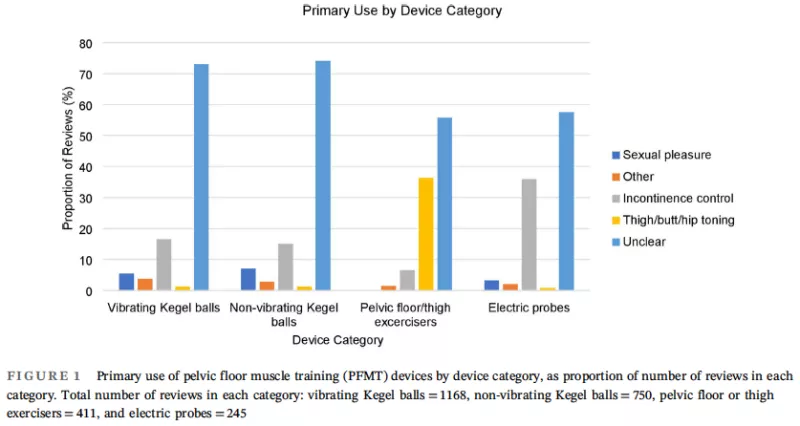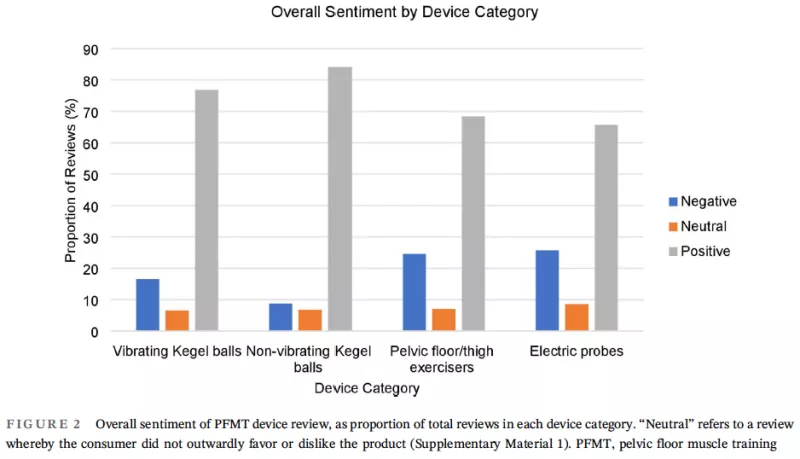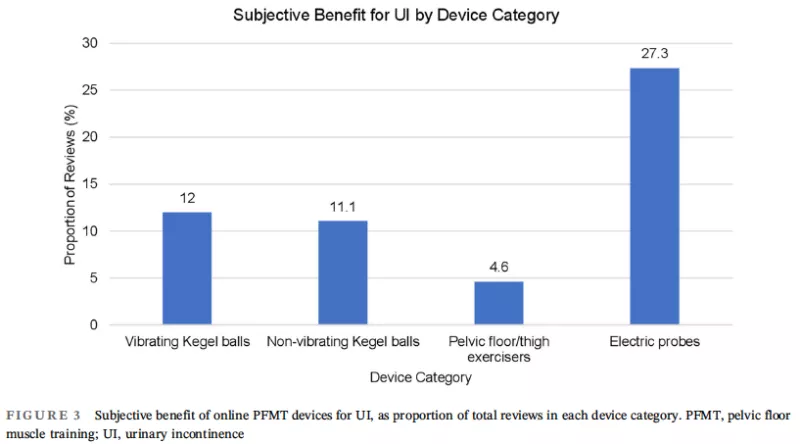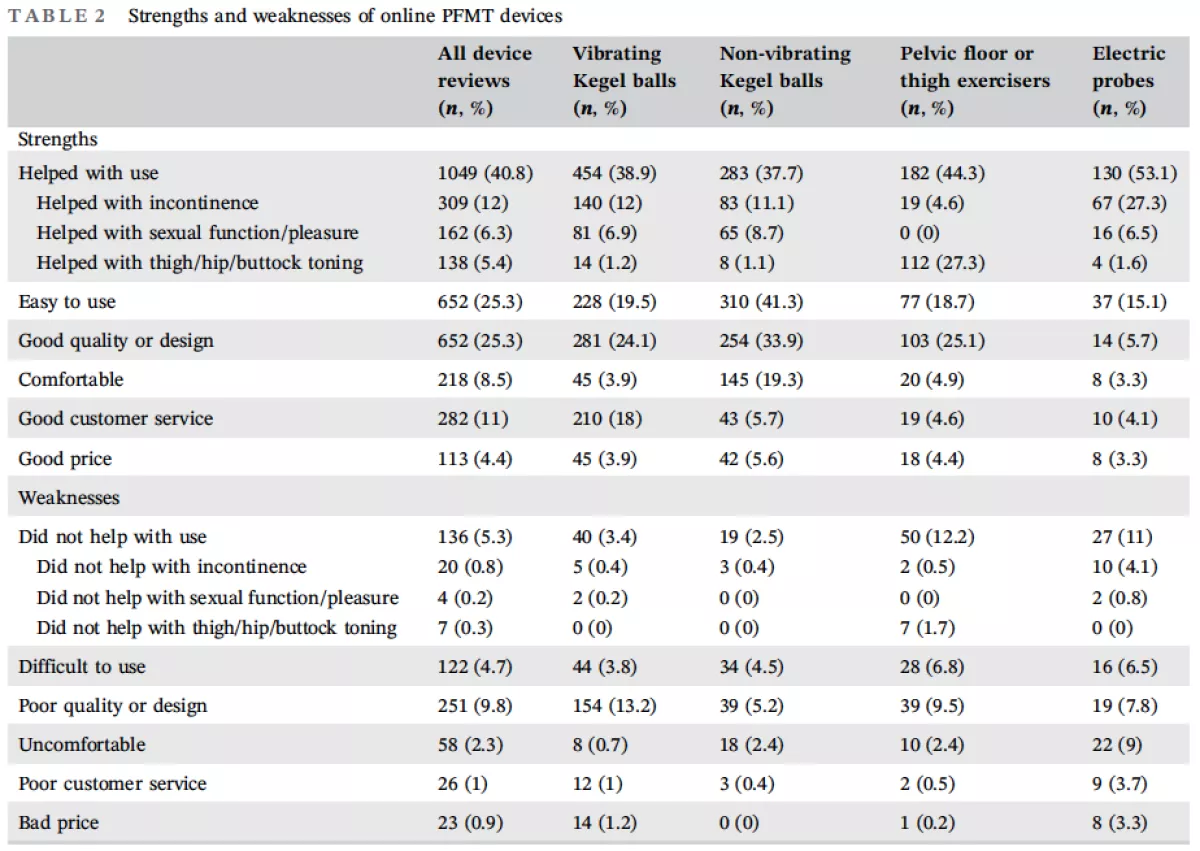Evaluating the primary use, strengths and weaknesses of pelvic floor muscle training devices available online (PDF)
Neurourology and Urodynamics. 2020 November 2
Aims: Treatment for urinary incontinence (UI) includes pelvic floor muscle training (PFMT). There is limited data appraising the characteristics of PFMT devices. We aimed to ascertain the primary use, strengths and weaknesses of PFMT devices available online, through evaluation of consumer reviews.
Methods: We performed an analysis of PFMT devices on Amazon.com. Four key device categories were recognized. Reviews from the five most frequently-reviewed products per category were analyzed (n = 20). W characterized device use, strengths and weaknesses using thematic analysis.
Results: We evaluated 2574 PFMT device reviews including 1168 vibrating Kegel balls, 750 non-vibrating Kegel balls, 411 pelvic floor or thigh exercisers, and 245 electric probes. Non-vibrating Kegel balls were rated highest (4.6/5 stars), followed by vibrating Kegel balls, electric probes and pelvic floor or thigh exercisers (4.4/5, 4.1/5, and 3.8/5 stars, respectively). Most reviews were positive (77%) or negative (16%) with few neutral (7%). While all were marketed to treat UI, most reviews did not mention the intended use. Vibrating and non-vibrating Kegel balls and electric probes were most likely to be used for UI, and pelvic floor or thigh exercisers for toning. Some used non-vibrating and vibrating Kegel balls for sexual function. Electric probes were the most beneficial device for incontinence control (27%, 67/245). Twenty-five percent of all product reviews praised device ease of use and good quality or design. A minority of reviewers found products difficult to use, of poor quality or design and uncomfortable.
Conclusion: Consumers utilized online PFMT devices for multiple purposes, including UI, toning and sexual function. Reviewers generally praised PFMT products, particularly electric probes for UI.




